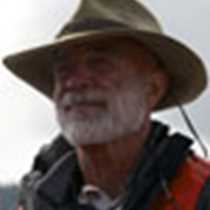Gorda Banks & San Jose del Cabo, Baja California Sur, Mexico
What an unbelievable four hours this morning among humpback whales. I have been coming to Baja California and watching humpback whales for 38 years and yet today I kept 253 photos of this morning’s show…after editing out a few hundred more!
This population of humpback whales winters along the coast of Mexico and spends its summers feeding from northern California to the Gulf of Alaska. They fast during the migrations north and south and also while they are here in Mexico and feed, feed, feed voraciously on small schooling fish and krill while in northern waters during the summer.
Today we saw pair after pair of mothers and their calves of the year. This late in the humpback season, the calves are large enough to be inquisitive, playful and very energetic, and we watched in fascination as the calves leapt or breached high out of the water time and time again. Only in one case did another whale, an adult male escort, accompany a mother-calf pair and it was this escort that was also breaching over and over to our delight. What an incredible experience to see the grace with which this 40-ton animal hurled itself into the air and then came crashing down, setting up a huge wave. When we humans try to duplicate this, even with fins on, we go under water, gather speed, break the surface of the water…..and get up to about our neck! This whale not only did this once but repeated it over and over for well over 30 minutes.
It was quite a change after lunch when we boarded very modern and comfortable motor coaches for the short ride from the boat harbor to the beautiful town of San Jose del Cabo. This is definitely not Cabo San Lucas of condo, hotel, bar and party fame but the site where the Jesuits founded the first mission in the area and a town that still has the flavor of old Mexico.
We divided into two groups for the afternoon: one spending the time in the town wandering and shopping and tasting some of the local ice cream or having a cervesa, and the other group spending their time walking along the beautiful estuary formed by the San Jose River. On this nature walk we saw a wide variety of wading birds such as herons, egrets, ibis, stilts, sandpipers and plovers. Whichever choice was made, we all had a wonderful afternoon.
The National Geographic Sea Bird then dropped lines and headed for sunset off the famous Friar’s Rocks at the very tip of Baja California, which divides the Sea of Cortez from the Pacific Ocean. We are now bouncing northwards along the Pacific coast and very excited about our upcoming days in Magdalena Bay with the gray whales.




